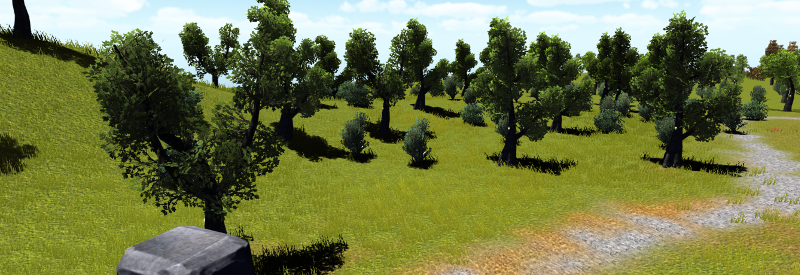
|
|
Problem Setting
|
The proposed problem setting was to create a virtual museum for the Oculus Rift, with the help of the Unity Game Engine. Since this is pretty vague, we invested a sizeable amount of time to test the limits and feasibility of specific aspects, including:
- Automated simplification of objects
- Usability of the template
- Actual use-case scenarios
- User comfort
The plan was to provide a tool, with which institutions could easily convert existing 3D scene renderings or informational videos to explorable virtual reality scenes. In addition, it should be possible to discern between different kinds of exhibits, of which some are best presented as a single object, while for others a reconstructed scene is preferable.
During the project phase, we encountered both problems related to the actual imlementation, but also a lot of more psychologically caused problems like the virtual reality sickness.
Automated simplification of objects
Since scanned replicas of relics are mostly in extremly high resolution, the number of vertices and faces is far too high to render them in a real-time environment, especially since HMDs of any kind require a constant, high frame rate of at least 75 frames per seconds. Further explanation can be found in the chapter on "Best Practices".
While it would be best to create multiple rescaled objects for different quality settings, this might amount in a huge amount of (wasted) storage space.
Usability of the template
To open the area of VR to as many people as possible, the usability of the tool should be a key feature. A standalone version of the museum, with even easier usability was sadly not possible to do within this practical, as it would have required a lot of additional haggling with the dependencies within Unity, as well as further generalization of scenes, etc.
Actual use-case scenarios
When focussing on the performance and comfort of the final application, it should also be respected in which kind of settings the tool is used. Generally, we assume such a virtual tour as an additional way of interacting with the respective exhibits, thus not completely replacing a traditional museum. This also limits the average amount of time the user spends in virtual reality, resulting in a usually only slight nausea.
User comfort
While the shorter average use does not mean that we have to spend as much time on optimizing the project for the reduction of VR sickness, it is still important that the experience is both comfortable and immersive at the same time. To do so, we discussed various approaches on how to treat VR sickness, and what kind of exploration makes sense for a virtual museum.
|
|
|
Universität Heidelberg, 2016
|
|
|